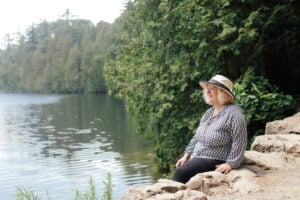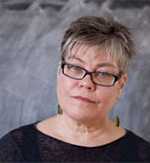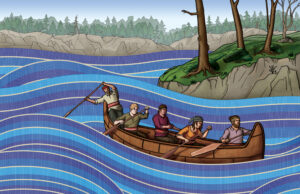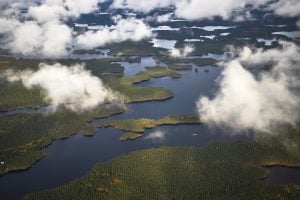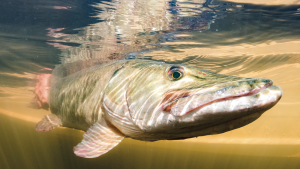Crawford Lake was up against 11 others. They spanned five continents and included Antarctic ice, tropical corals and mountain peat bogs.
Scientists were surprised by how consistently each of the 12 sites showed the global marks of human activity, explained Colin Waters, chair of the Anthropocene Working Group, the body of stratigraphers established in 2009 and charged with choosing the best site. He made the pronouncement during a press conference last week.
“When you combine them and read the stories that they tell you, it shows you that there is this very significant and very rapid change to the environment in a very short period of time,” said Waters, a geologist at the University of Leicester in the United Kingdom.
If the Anthropocene Working Group has its way, stratigraphers will eventually proclaim that the planet has entered the Crawfordian age (by protocol, named after the site of the golden spike) of the Anthropocene epoch. It will be only the 39th new epoch ever proclaimed in the planet’s 4.6-billion-year life.
It represents a point of no return, geologically speaking. Earth will have broken in fundamental ways from the Holocene epoch that began during the Stone Age about 11,700 years ago, a long period of climate stability that supported the growth of human civilization.
Unlike other transitions in the geological time scale, some of which affected the planet’s ability to support life, this one does not involve contortions of the crust, explained Simon Turner, secretary of the Anthropocene Working Group and a senior research fellow at University College London.
“The effects are very much atmospheric, soil. Essentially, the living parts of the planet are what have been so massively affected by the Anthropocene. And in that sense, it is on a par with some of these major planetary events that have occurred in the past.”
That means the problem is not merely local, but global, Jürgen Renn, director of the Max Planck Institute of Geoanthropology in Jena, Germany, explained at the press conference.
“And so I think we have to take it as a challenge for human creativity and ingenuity,” he said.
Markers of the new epoch are linked to what’s known as the Great Acceleration. That’s the period after the Second World War when human activity began to overwhelm Earth’s operating systems. Population surged. So did industry, driven by burning fossil fuels, which loaded the atmosphere with carbon dioxide. Add to that plastics, nuclear tests, nitrogen-based fertilizers and species depletions.
All of it showed up in Crawford Lake, in a precise, year-by-year record, explained McCarthy, who is also a voting member of the Anthropocene Working Group. That’s because this humble little lake’s chemistry is among the rarest in the world. For one thing, the lake is meromictic, meaning its top and bottom layers never mix. The ratio of its depth of 24 metres and its surface area of 2.4 hectares prevents mixing.
But in addition, the bottom layer contains oxygen. Geologists know of no other lake in North America with that combination and few others in the world.
The result is that material falls to the bottom of the lake and is sealed by deposits of calcite in distinct couplets of layers, called varves, separated into summer and winter seasons. Each layer can be dated to the exact year, critical to the nomination for golden spike.
